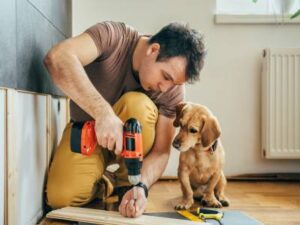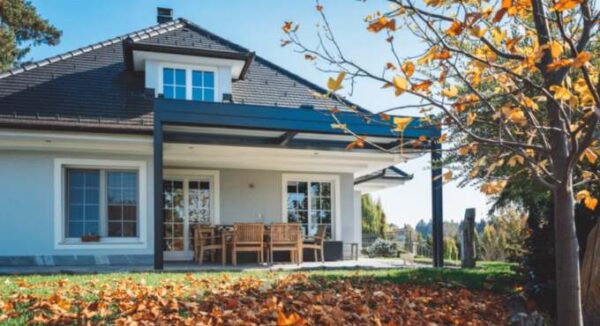
If pets are part of your family, you’re in good company. According to the American Veterinary Medical Association, over 38 percent of households include dogs, and more than a quarter have cats.
Renovating your home to accommodate your fur babies is an excellent way to enhance your home’s appearance and functionality while also improving your pet’s life.
Depending on your renovation project, you may also increase your home’s resale value. However, unless you’re planning to sell soon, your return on investment should be a secondary concern compared to improving your home environment.
With expanding demand for ‘doggie daycare’ and travel options that include ‘pet-friendly hotels,’ interest in pet-centric home features is on the rise. With this in mind, here are a dozen potential renovation projects:
1. A fenced backyard
Whether visible or invisible, a fenced yard is a top renovation priority for many dog owners. If you opt for a standard privacy fence, consider creating “windows” at your dog’s eye level. These can be simple cut-outs or plexiglass globes to provide an expanded view. Wood shutters that you manually open and close are another option.
2. Pet door
A customized, built-in pet door that allows your pet to travel in or out of a fenced area for exercise and potty trips will improve their quality of life and yours. New options include collar-activated doors with and without schedules, so they can’t get outside when you don’t want them to.
3. Built-in pet gates
Similar to a pocket door, but shorter, pet gates can be built into door frames or lower cabinets. Just roll them in or out as needed. These built-in gates are also handy for parents of toddlers, helping to keep kids or pets in or out of the kitchen or away from stairs.
4. Pet-friendly cabinets
A roll-out lower cabinet drawer is an easy way to position food and water bowls at the right height then tuck them out of sight when not in use.
Consider placing a built-in tilt-out bin above the drawer to hold bulk food plus a shelf for other pet product storage, all in one location.
Similarly, a lower bathroom cabinet can be converted into a space to keep a litter box out of view. Position it on on a slide-out platform to simplify cleaning and include a cut-out opening for cat access.
5. Greenhouse window
Instead of growing plants, put a fluffy bed in a bump-out window so your cat or dog can sun themselves on a lazy afternoon while enjoying a full view of the outdoors. Depending on the window’s location and your pet’s needs, you may need to add access steps or a ramp.
6. Window seats
Consider dedicating space under a window seat for an enclosed pet bed. People can sit on the ledge while your dog or cat can access the hollow area below from either end, creating a dark, safe sanctuary for “private time” or to escape household hub-bub.
7. Heated floors
Four- and two-legged creatures alike love walking barefoot (or sleeping) on floors with radiant heat. Or, a budget-friendly option is an electric bed heater designed specifically for pet use.
8. Outdoor ramps
Older dogs can remain mobile when ramps are installed instead of steps, or alongside steps. Ramps can also be used for wheelchair access and walker use if they’re built with an eye toward universal design.
9. Walk-in shower
An easy-access shower is another universal design feature that’s an asset in any bathroom but also makes it much easier to bathe larger dogs. Just make sure your hand-held shower head has an extra-long hose or install a second one closer to the floor.
10. Cat shelves
Create a cat perch wall with floating shelves. You may want to arrange the shelves, so they lead to a platform near the ceiling that spans one or more walls, keeping your kitty “above the fray” and encouraging exercise.
11. Flooring
Choose stain-resistant carpet, scratch-resistant hardwood, tile, or other “accident-proof” flooring in living areas. This is appealing to pet owners but also scores high marks with potential buyers with young children or a general preference for low-maintenance homes.
12. Furniture
Trade-in standard coffee tables and end tables for pet-friendly furniture that accommodates dog crates, tucked-away sleeping spots, or a litter box. To corral pet toys when not in use, find a lidded wooden box or incorporate baskets into shelving. Pet-friendly furniture has the added advantage of moving with you if you decide to purchase a different home.
Source: National Association of Realtors










